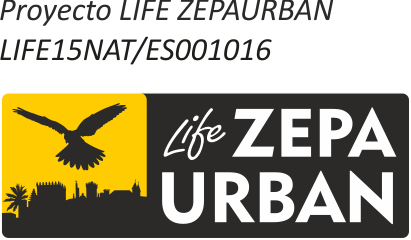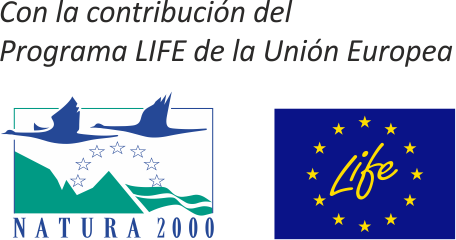The General Directorate of the Environment (DGMA) has shown that there is a high frequency of failure to comply with the measures set out in the Impact Reports or in the technical descriptions of how to implement work compatible with the presence of lesser kestrels, usually derived from an incorrect interpretation of the measures concerned or lack of understanding about the species and its needs. This might appear insignificant, but could be key for the lesser kestrel, given that one of the main threats is loss of suitable nest sites.
Most construction companies, especially those that work in small localities, lack the experience in this type of highly specific work, which is why it is so important that those doing the work have a detailed understanding of the appropriate way to do this work and have the tools available to ensure that the work is correctly undertaken.
For this objective, training workshops will be organised for those involved in construction work in which the different materials that are used in the restoration of buildings with lesser kestrels (different types of nest boxes, adapted tiles, ceramic plaques for scaffolding holes etc) will be examined with advice, above all, on how to install them.
Before starting the workshops, a directory of businesses and individuals will be prepared, with preference for those who operate in the urban SPAs declared for lesser kestrels. This will facilitate the development of the programme and the distribution after the workshop of documentation covering the areas addressed (actions E3 and E5).
The workshops, led by an interdisciplinary team will comprise two parts. The first will be background concerning the biology of the lesser kestrel and threats relating to work at nesting colonies, as well as to build awareness about the urban SPAs, the Natura 2000 network and the obligations of compliance for the norms.
The second part will include practical examples undertaken by the participants on the work, especially on nest box installation and improvement of scaffolding holes, as well as more complex work requiring more specialised approaches, without forgetting the correct construction of wooden nest boxes under the roof or proper installation of external nest boxes.
For the practical part of the workshop a portable replica of a tiled roof and wall will be built which will show to the participants the details of the installation of the nest boxes and the improvement of the scaffolding holes in a clear and participatory way, with diverse types of support and roof types, different types of entrance for the birds, different holes to improve in different ways, as well as at least two models of wooden nest boxes.
When the replica is not being used, it will be rotated through the establishments of the different partners to be used in training exercises that are not pre-planned in the courses, help address queries that arise, or in other activities of dissemination or awareness-raising as required.
The manual and video produced in action E3 (Recording and production of video materials) and the promotional materials in action E5 (Promotional materials for the project) will also be used. Visits to nearby construction work underway will take place, if feasible.
The DGMA will accredit the knowledge acquired by the participants of the workshops and prepare a public list of the companies with personnel with accredited experience in restoration work in colonies of lesser kestrels. This list will be made public through the project's website.
Responsibility for implementation: General Directorate of the Environment and DEMA.

